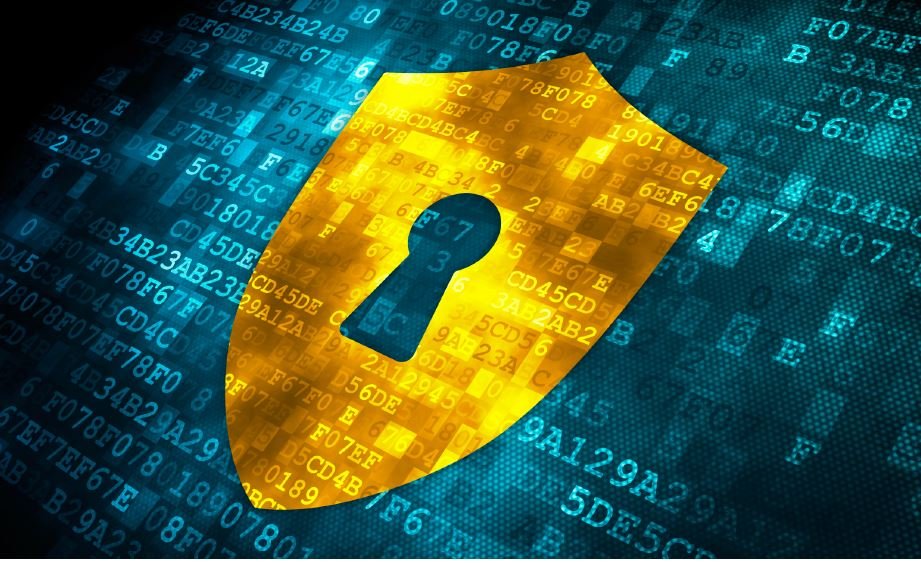The digital age, while offering unprecedented connectivity and innovation, simultaneously presents a complex and ever-evolving landscape of cyber threats. From sophisticated state-sponsored attacks to opportunistic cybercrime, the need for robust cybersecurity has never been more critical. Navigating this intricate domain requires access to a diverse array of resources, encompassing governmental guidance, professional development, timely intelligence, and powerful tools. This essay delves into the multifaceted world of cybersecurity resources, highlighting their indispensable role in fostering resilience, knowledge, and defense against the pervasive challenges of the digital frontier.
Government and International Organizations
Governmental and international bodies form the bedrock of national and global cybersecurity efforts, establishing policies, sharing intelligence, and coordinating responses to large-scale threats. In the United States, the Cybersecurity and Infrastructure Security Agency (CISA), a component of the Department of Homeland Security, stands as a central authority. CISA’s mission is to understand, manage, and reduce risks to the cyber and physical infrastructure that Americans rely on daily [1][2]. It achieves this by coordinating cybersecurity efforts across federal, state, local, tribal, and territorial governments, and by collaborating with public and private sector partners to develop and implement strategies, policies, and best practices [3]. CISA provides crucial services such as cybersecurity assessments, technical assistance, threat intelligence sharing, and incident response coordination, playing a pivotal role in safeguarding critical infrastructure sectors like energy, transportation, and healthcare [3][4]. For instance, CISA actively spearheads initiatives to close the “software understanding gap,” aiming to help developers and users validate software security before deployment, thereby protecting national infrastructure [5].
Another cornerstone is the National Institute of Standards and Technology (NIST), globally recognized for its Cybersecurity Framework (CSF). The NIST CSF is a voluntary, risk-based approach that provides a common language for managing cybersecurity risk, enabling better communication between technical and non-technical stakeholders [6][7]. Its benefits include superior and unbiased cybersecurity, long-term risk management, and the ability to bridge the gap between business and technical leadership, leading to better justified and allocated security budgets [6][8]. The framework’s flexibility and adaptability make it a cost-effective way for organizations to approach cybersecurity and foster an enterprise-wide conversation around cyber risk and compliance [6]. It is comprehensive in its coverage, encompassing a full range of cybersecurity disciplines and offering detailed subcategories and implementation examples, making it easy to use and widely supported with free resources [9].
Across the Atlantic, the European Union Agency for Cybersecurity (ENISA) serves as the EU’s central cybersecurity authority. Established in 2004 and strengthened by the EU Cybersecurity Act, ENISA aims to achieve a high common level of cybersecurity across Europe [10][11]. Its responsibilities include developing and implementing EU cybersecurity policies, coordinating responses to cross-border cyberattacks, promoting cooperation and information sharing, and producing studies and best practices [10][11]. ENISA plays a key role in advancing regulations like the NIS Directive and the Cyber Resilience Act, and it is instrumental in organizing initiatives such as the European Cybersecurity Month to raise awareness [10][11]. These organizations collectively underscore the critical role of governmental and international collaboration in shaping the global cybersecurity posture, providing foundational guidance and operational support.
Professional Organizations and Associations
Professional organizations and associations are vital for fostering community, facilitating knowledge exchange, and driving professional development within the cybersecurity field. These groups offer certifications, networking opportunities, and a wealth of resources that empower individuals and elevate industry standards. (ISC)² is a prominent international non-profit membership association dedicated to creating a safe and secure cyber world. It is renowned for its range of certifications, most notably the Certified Information Systems Security Professional (CISSP), which is highly valued in the industry. Certifications like CISSP significantly increase marketability, job opportunities, and earning potential, with certified professionals often commanding higher salaries and experiencing career advancement [12][13]. (ISC)² actively contributes to growing the cybersecurity workforce, for instance, by offering free Certified in Cybersecurity (CC) courses and exams to one million individuals.
ISACA, formerly the Information Systems Audit and Control Association, is another global association that provides guidance and practices for information systems governance, risk management, and cybersecurity. ISACA developed the COBIT (Control Objectives for Information and Related Technologies) framework, which offers structured guidance on aligning IT processes with business objectives [14][15]. COBIT helps organizations meet compliance requirements, mitigate risks, and manage enterprise IT, providing a common language for IT professionals, business executives, and compliance auditors [14][15]. Its principles include addressing stakeholder needs, providing end-to-end enterprise coverage, and employing integrated frameworks, making it a comprehensive tool for IT governance [16].
The Information Systems Security Association (ISSA) serves as a community for international cybersecurity professionals, focusing on advancing individual growth and protecting critical information and infrastructure. Its local chapters provide essential platforms for networking and sharing knowledge, fostering a collaborative environment for professionals to stay abreast of emerging threats and best practices. Similarly, the Cloud Security Alliance (CSA) is a leading organization dedicated to defining best practices for secure cloud computing environments. It provides research, education, and certification tailored to cloud security professionals, addressing the unique challenges and opportunities presented by cloud adoption. These associations are not merely credentialing bodies; they are dynamic ecosystems that cultivate expertise, ethical conduct, and collective defense, ensuring that cybersecurity professionals are well-equipped to tackle the challenges of a constantly evolving threat landscape.
Training and Educational Resources
The dynamic nature of cybersecurity necessitates continuous learning and skill development, making robust training and educational resources indispensable. A wide spectrum of options exists, catering to various skill levels and career aspirations, from free introductory courses to advanced, hands-on labs. Free training platforms play a crucial role in democratizing access to cybersecurity education. CISA, for example, offers free end-user and administrator training, enhancing the cyber hygiene of organizations. (ISC)²’s initiative to provide one million free Certified in Cybersecurity (CC) courses and exams is a significant step towards addressing the global cybersecurity workforce shortage. Platforms like Coursera host numerous free cybersecurity courses from reputable universities and companies such as Google and IBM, providing foundational knowledge in areas like “Cybersecurity for Everyone” and “Foundations of Cybersecurity.” EC-Council also offers free online courses covering topics from IoT to cloud computing, making specialized knowledge accessible to beginners. For those who prefer a more interactive and practical approach, platforms like TryHackMe offer hands-on, beginner-friendly learning paths that cover various concepts and tools through gamified exercises.
Beyond free resources, hands-on practice environments are critical for developing practical skills. Tools like Damn Vulnerable Web Application (DVWA) provide intentionally vulnerable web applications, allowing security professionals to legally and safely test their penetration testing skills. Hack The Box offers a community-driven platform with hacking challenges that simulate real-world scenarios, enabling users to practice and refine their offensive security techniques. For more structured and advanced training, institutions like the SANS Institute offer world-renowned, intensive courses and certifications covering a vast array of cybersecurity domains, from incident response and digital forensics to secure software development. These programs are often geared towards experienced professionals seeking to specialize or gain advanced certifications. The value of certifications cannot be overstated; they validate expertise, enhance career prospects, and often lead to higher earning potential [12][13]. The continuous investment in training and education, whether through free online courses, hands-on labs, or advanced certifications, is paramount for individuals to stay competitive and for organizations to maintain a skilled workforce capable of defending against sophisticated cyber threats.
Open Source Tools
The cybersecurity community heavily relies on a vast ecosystem of powerful open-source tools, which offer flexibility, transparency, and cost-effectiveness. The open-source model, where code is publicly available, allows for community-driven development, rapid vulnerability identification, and continuous improvement, fostering trust and innovation [17][18].
For penetration testing and vulnerability assessment, Kali Linux stands out as a Debian-based distribution pre-loaded with hundreds of free software and penetration testing tools, making it an indispensable resource for ethical hackers and security testers. The Metasploit Framework is another critical tool, widely used for vulnerability validation and exploitation, allowing security professionals to simulate attacks and understand system weaknesses. Nmap (Network Mapper) is a versatile tool for network discovery and security auditing, capable of identifying hosts, services, and operating systems on a network. Wireshark, a popular network protocol analyzer, provides deep insights into network traffic, allowing for the inspection of individual packets and analysis of communication flows, which is crucial for troubleshooting and security analysis [19][20]. OWASP Zed Attack Proxy (ZAP) is an open-source web application security scanner that helps identify vulnerabilities in web applications, adhering to the OWASP Top 10 risks.
In the realm of security monitoring and defense, Security Onion is a free and open-source Linux distribution that integrates tools for intrusion detection, network security monitoring, and log management [21][22]. It combines best-of-breed open-source tools like Suricata, Zeek, Elasticsearch, and Kibana, providing comprehensive visibility into network and host activity for threat hunting and incident response [21][22]. OSSEC (Open Source HIDS SECurity) is a host-based intrusion detection system (HIDS) that performs log analysis, integrity checking, Windows registry monitoring, and rootkit detection across various operating systems [23][24]. Snort is an open-source intrusion prevention system (IPS) capable of real-time traffic analysis and packet logging, using rule-based detection to identify and block malicious activity.
For password management and encryption, KeePass offers a free and open-source solution for securely managing passwords. VeraCrypt is a powerful, free, and open-source disk encryption software for Windows, macOS, and Linux, enabling on-the-fly encryption of entire partitions or virtual disks, and offering plausible deniability through hidden volumes [25][26]. GnuPG (GPG) allows users to encrypt data and create digital signatures, providing a robust solution for secure communication and data integrity. The collective power of these open-source tools underscores the collaborative spirit of the cybersecurity community and provides accessible, effective solutions for protecting digital assets.
The comprehensive landscape of cybersecurity resources, from governmental directives and professional associations to educational platforms and open-source tools, forms an indispensable defense mechanism in the face of escalating digital threats. These resources collectively empower individuals and organizations to build robust security postures, foster continuous learning, and collaborate effectively against a constantly evolving adversary. By leveraging these diverse offerings, the global community can strive towards a more secure and resilient digital future.



